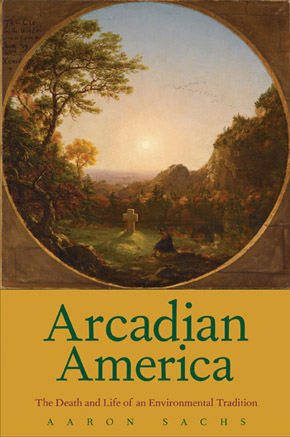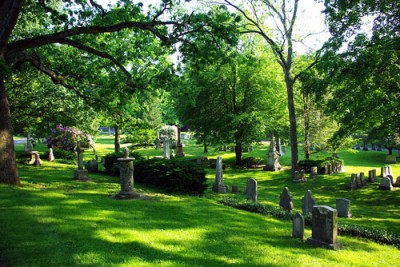Tearing Down the Boundaries
with Death and Narrative
Nonfiction: A New History
Fred MacVaugh
 Aaron Sachs, “Arcadian America: The Death and Life of an Environmental Tradition”
Aaron Sachs, “Arcadian America: The Death and Life of an Environmental Tradition”
Yale University Press
2013, 484 pages, cloth, $35
The competition is fierce, the numbers of readers becoming fewer and fewer. Does scholarly history still possess appeal? I’m a history major and even I doubt the value of most new releases. Each year, they number in the hundreds. These days, I have neither the time nor—honestly—the inclination to read rigorously researched academic arguments, no matter how successfully executed they may be. Aren’t there more pressing concerns? Like inequality and poverty? Like climate change?
What I want are histories written in ways that help me feel—yes, feel!—the past is pertinent. What I crave is a return to roots, to story. And that precisely is what Aaron Sachs gives us in “Arcadian America: The Death and Life of an Environmental Tradition”: a historian’s heart and mind in unison exploring a subject. And what’s he exploring? Death. Yes, death, and how at the time Americans accepted and acknowledged death, making it part and parcel of the communities they inhabited, they had stronger and healthier connections to place and nature.
This surprising and little-known heritage is but one reason why I hated to finish “Arcadian America.” By way of a captivating combination of memoir and historical scholarship, Sachs discovers the origins and evolution of the “real and imagined places that contain palpable reminders of how, like it or not, we are inextricably intertwined with our environment” (3). Through such places and their histories—“cemeteries, most importantly; but also city parks; and public gardens; and farmers’ markets; and utopias—or, more appropriately, Arcadias” (3)—Sachs invites readers into the past’s current and sometimes painful relevance: the Civil War’s lasting effects on American attitudes toward death; the development and loss of the Arcadian tradition in garden cemeteries; his failures to respond meaningfully to friends’ dying and deaths, to his parents’ aging.
In “Arcadian America,” Sachs masterfully blurs the boundaries between the then and now, life and death, the scholarly objective and subjectively human. Entwined within and enriching his rooted memoir is a remarkable—and heartfelt—narrative of Americans’ cultivation of places for death, of cemeteries like Mount Auburn in Massachusetts, for instance. “When many Americans confronted mortality openly, publicly, continually, as human beings’ defining limit,” Sachs writes, “they consequently believed that the highest expression of human civilization might entail accepting nature rather than subduing it” (12). His own life and learning—discovering and exploring historic cemeteries and Civil War battlefields, the unknown death of an older infant brother—illuminate in narrative microcosm larger themes in American social, cultural, and environmental history: Arcadianism and its legacy in art and politics, landscape architecture, and utopianism.

The garden-like Mount Auburn Cemetery in Cambridge, Mass.
Sachs writes, “The point of the broader Arcadian movement was not to revert to any particular form of country living but to integrate certain environmental values into all the different modes of modern existence. The soil, the trees, the shade, should be everywhere with us, in our physical reality and in our thoughts: there should be room within our communities for the nests of birds and the hives of bees, so that such creatures might skirt our pathways, flit in and out of our consciousness, remind us of the cycles of pollination and incubation and regeneration” (104). It’s an environmental tradition with a genesis in the acceptance and celebration of death and, through garden cemeteries and other places of repose, death’s invitation into community and yard.
As a narrative history, Sachs’ scholarly monograph proves the potential and essential promise of the interdisciplinary synthesis to come in historical scholarship: the marriage of story, that most crucial component for the creation and transmission of wisdom, with an understanding of people in place through time and how they responded—or not—to challenges similar to those we confront today on grander scales.
And that is the lesson, the experience, to be had here. With historical examples and current experience, Sachs illustrates it’s not too late. Like seasons, history repeats itself, and none of us, no matter how much we might otherwise wish, lives without experiencing and embodying the influences of both nature and history. Regardless of how much we’ve altered and subdued nature, regardless of how much we’ve made it serve our consumptive will, we can’t live without it. Like death, we can’t ignore or escape it.
The lesson the Arcadians have to teach, Sachs tells us, is that hybrid nature is more vital for our survival than wilderness. In hybridized landscapes—in cemeteries and city parks, in utopias—healing and renewal are possible. To help readers remember, to help them look ahead and prepare for a worrying future, Sachs in “Arcadian America” braves that borderland by and large eschewed by academics in our age of information overload. He marries thought and feeling, scholarship and creativity. It’s a refreshing synthesis, a fertile soil in which shrewd and relevant meaning-making flourishes like healthy Arcadian ideals.

Fred MacVaugh, Assistant Reviews Editor

0 comments on “Reviews: Arcadian America”